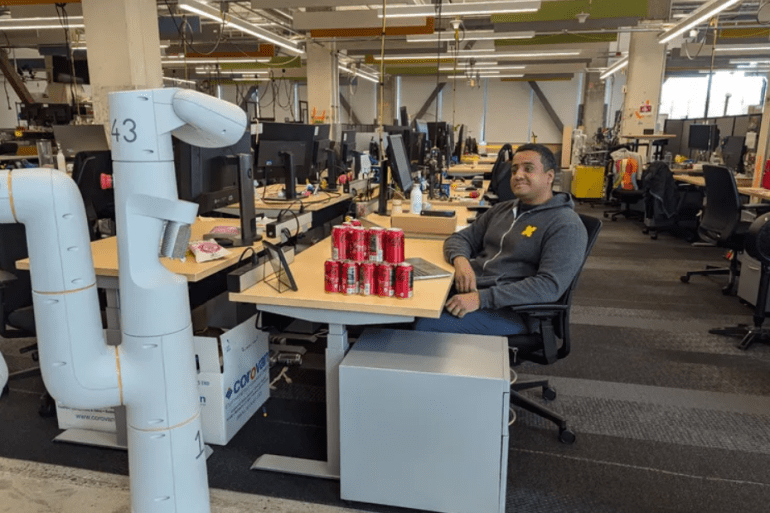- Google integrates Gemini AI to improve robot navigation and task execution.
- Gemini 1.5 Pro uses a long context window for more intuitive interactions via natural language commands.
- Robots learn from video tours of environments like homes and offices to understand and respond to commands.
- Initial tests show a 90% success rate in executing over 50 user instructions in a large operational area.
- Gemini AI enables robots not only to navigate but also to plan tasks based on environmental cues.
Main AI News:
Google is leveraging Gemini AI to advance its robots’ capabilities, focusing on enhancing navigation and task execution. According to a recent report by DeepMind’s robotics team, Gemini 1.5 Pro’s expansive context window is pivotal in facilitating intuitive interactions with its RT-2 robots through natural language commands.
The process involves recording video tours of specific environments, such as homes or offices, and using Gemini 1.5 Pro to enable robots to “watch” and learn from these visual inputs. Consequently, robots can execute commands based on these observations, responding with both verbal and visual outputs. For example, when shown a phone and asked, “Where can I charge this?” the robot guides users to a nearby power outlet. DeepMind reports a promising 90 percent success rate across more than 50 user instructions tested within a sprawling 9,000-plus-square-foot operational area.
Furthermore, initial findings indicate that Gemini 1.5 Pro empowers robots not only to navigate but also to effectively plan tasks. For instance, when asked about the availability of a user’s favorite drink amidst cluttered Coke cans on a desk, Gemini directs the robot to check the fridge, evaluate for Cokes, and communicate the findings to the user. DeepMind plans to delve deeper into these capabilities in future investigations.
While Google’s video demonstrations showcase impressive capabilities, the research notes that each instruction processing, despite edited clarity, takes between 10 to 30 seconds. Thus, while the prospect of advanced, environment-aware robots in our homes is promising, practical deployment may still be some time away—though these robots could soon prove invaluable in locating misplaced items like keys or wallets.
Conclusion:
This advancement signifies Google’s commitment to enhancing robotic capabilities through advanced AI integration, promising more efficient and responsive robots capable of complex interactions in diverse environments. For the market, it suggests a future where AI-powered robots could play a crucial role in everyday tasks, from home assistance to specialized industrial applications, potentially transforming sectors reliant on automation and intelligent robotics.

